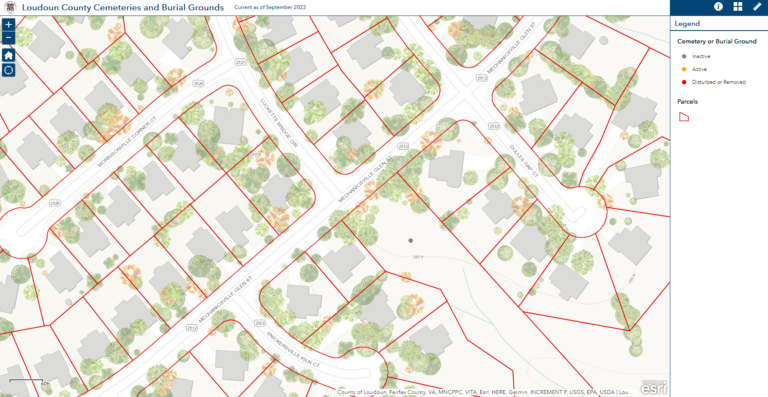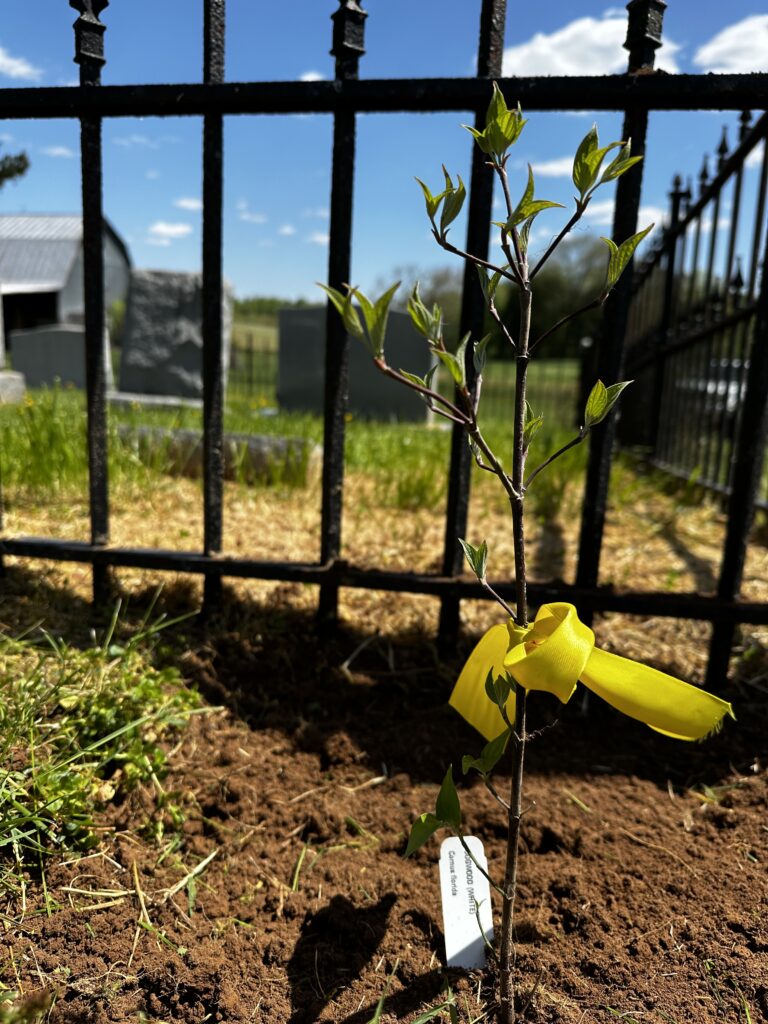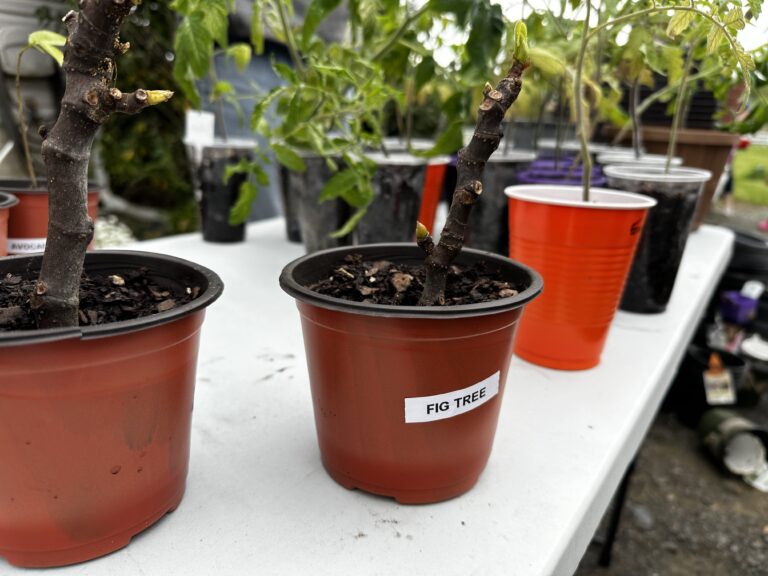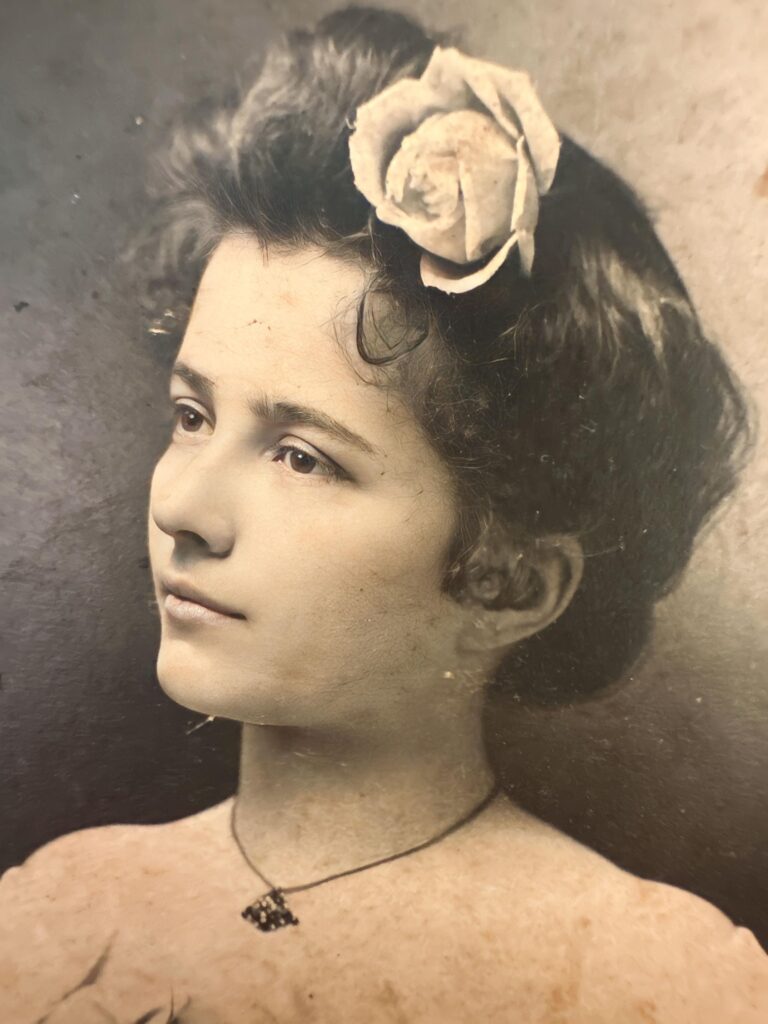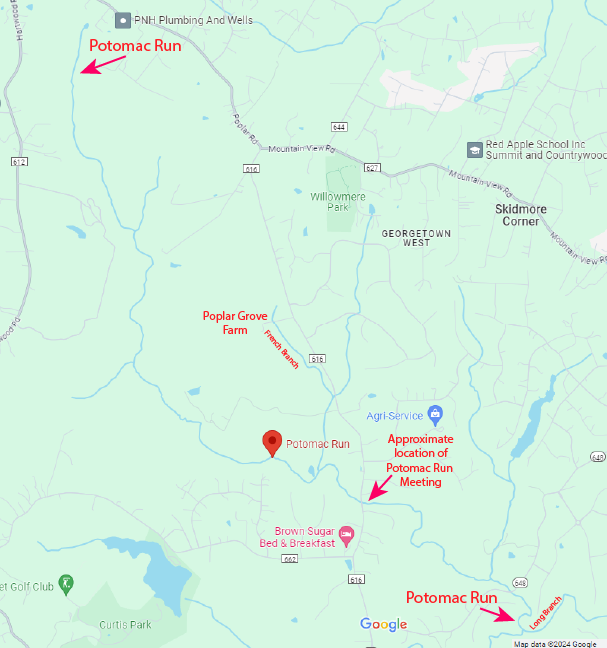Stafford County commissioned a survey of slave-related locations within the county in 2015. It is referred to in the survey by the unfortunate, inaccurate moniker “Fitzhugh Family Slave Cemetery”. There are no slaves who belonged to the Fitzhugh family buried in the slave cemetery at Poplar Grove Farm, and no slaves named Fitzhugh are buried here either. A better name would have been the Betty and Elzy Jones Family Cemetery, because we believe Betty Jones buried six of her children in the Poplar Grove Farm slave cemetery.
Fitzhugh Slave Cemetery
CULTURAL RESOURCE STUDY OF SLAVERY-RELATED BUILDINGS AND SITES IN STAFFORD COUNTY, VIRGINIA by Emily Anderson, Sara Poore, and Dennis Pogue; Prepared for Stafford County Board of Supervisors; July 2015; https://cdn.staffordcountyva.gov/Stafford%20Co%20Slavery-related%20Resources_Final.pdf
Fitzhugh Family Slave Cemetery
1499 Poplar Road
Stafford County, Virginia
DHR #:089-0218 / 44ST1200
Date: Circa 1830
The resource at 1499 Poplar Road is located approximately 0.2 miles west of Poplar Road in the Hartwood election district of rural Stafford County. The resource sits on a large parcel measuring approximately 237 acres covered by a manicured grass lawn, agricultural fields, and densely wooded areas. The parcel is dotted with mature trees and saplings. The primary resource, a slave cemetery, is situated northwest of the primary dwelling in a wooded area surrounded by agricultural field and can only be accessed by foot (Figure 50, p. 143).
Archival
This cemetery was historically associated with Poplar Grove (see p. 115). Said to have been originally built by Quakers in the late-eighteenth century, Poplar Grove transferred to Sarah “Sallie” Curtis and James French in 1830 as a Dowry from the George Curtis family. The main house, built of stone, was taken down about 1900, but a spring house and kitchen remain as well as this cemetery. The Frenches were increasingly prosperous farmers, and their ownership of slaves reflected this—they owned 11 in 1850 and 21 (worth more than $20,000) in 1860. The increase in slave labor resulted in a doubling of corn production at Poplar Grove to 1,000 bushels in 1860 (U.S. Agricultural Census 1860). This cemetery represents the interment area for the enslaved individuals who lived on the land, some of whom were quartered in the kitchen described earlier in this report.
Architectural Description
The Fitzhugh Family Slave Cemetery is a circa-1830 presumed slave cemetery associated with Poplar Grove (Photo 106 and Photo 107, p. 144). While overgrowth prohibited entry to the cemetery during the current survey, a survey conducted by the SCCC in the fall of 2007 notes various details pertaining to the resource. The cemetery contains approximately 30 interments whose locations are marked by fieldstones—a marking system very common for enslaved individuals in this area. Records on file by the SCCC suggest that this cemetery was used as a burial location for 100 years from 1830–1930, thus it continued to be employed after emancipation as individuals tied to those interred in this area were buried in this graveyard to be near their kin. Given the length of use, although the above-ground visible elements of the cemetery measure approximately 100 feet by 100 feet, it is possible that graves extend beyond this boundary and are no longer visible on the surface (SCCC 2007).
Survey Map and Images of Poplar Grove Slave Cemetery
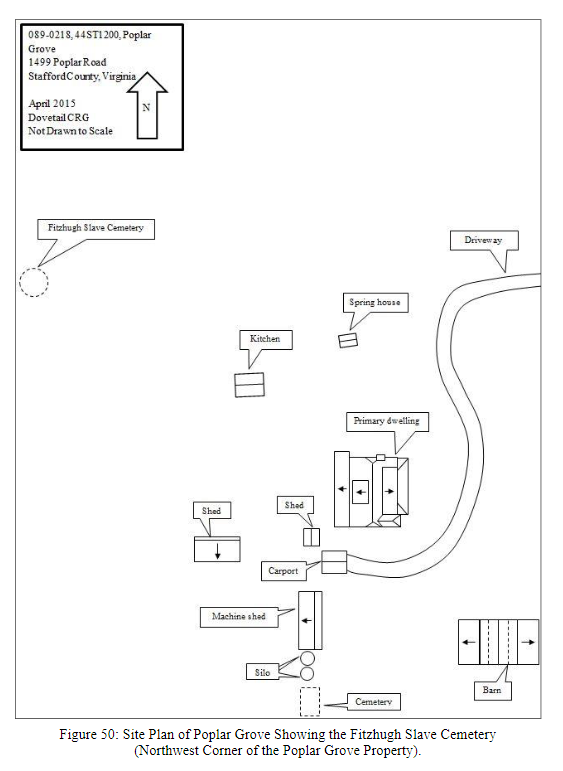
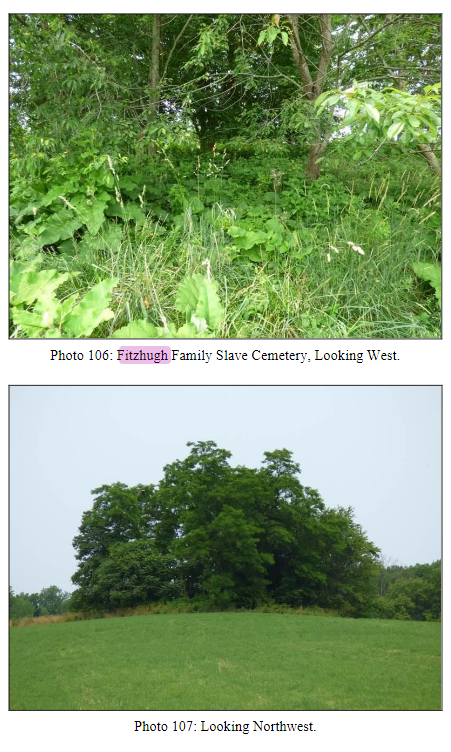
Find out some of the names of slaves who lived and may be buried at Poplar Grove Farm.

